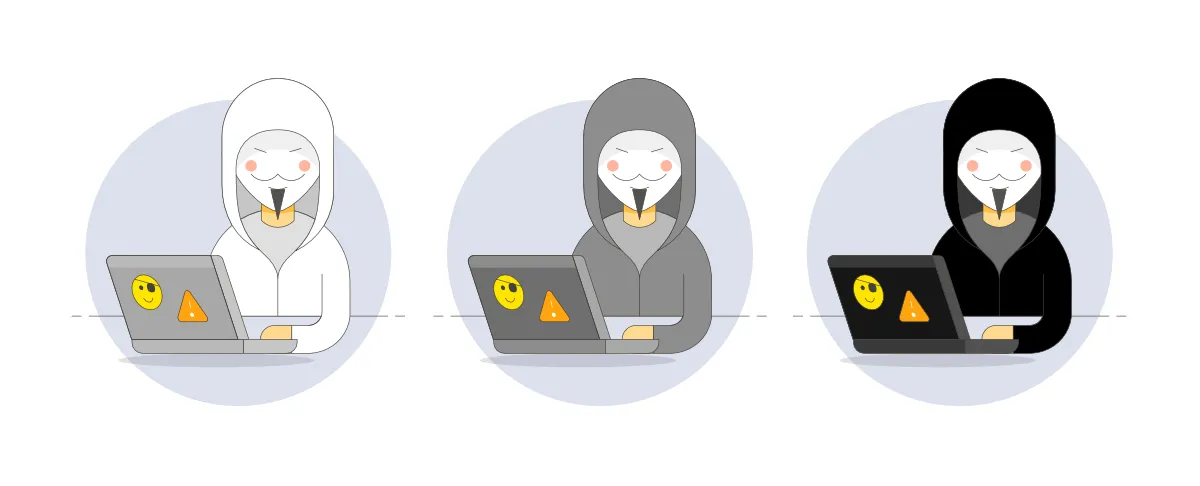What is ethical hacking?
Published: Jan 13th 2021 | 6 min read

The two words, seemingly contradictory, when put together mean bypassing the security to uncover data breaches, system threats, and weak spots. Ethical hacking, or also known as penetration tests, is an intrusion into systems and networks with the purpose of fixing the vulnerable points and improving security.
To block the attacker, one must think like a hacker. Ethical hackers can use the same methods as the malicious hackers would, the difference is the permission of the investigated company to prevent the wicked exploitation.
A few examples of what the ethical hacker is looking for are:
- Injection attacks
- Data poisoning
- Exposure of sensitive data
- Changes in security settings
- Authentication protocols breach
- Components used in the system or network that may be used as access points
Benefits of ethical hacking
- Discovery of vulnerabilities to fix the weak points
- Assurance of the data security to increase customers trust
- Secure network implementation that can prevent breaches
Types of hackers
The most popular typology of hackers divides them into three groups: white, gray, and black, depending on the permission.
White
Ethical hackers are called the White Hats and the hacking they performed is with the acknowledgment of the hacked organization.
Black
On the other side, the Black Hats access the systems and networks illegally and violently and whose purpose is to compromise and destroy information. Simply put, the White hats work to prevent the Black hats from taking the benefit.
Gray
However, in the middle stand the Gray Hats, who also illegally enter the systems and networks, yet with no malicious intentions. They usually perform out of fun and inform the organization about the findings.

Another division of hackers is based on their motivation.
Hacktivists
Political or social stand drives hacktivists motivation to infiltrate and hack systems as a form of protest. Usually, their activities lead to the website's main page or traffic errors.
Cyber Warrior
In this case, hackers disrupt another system of another country as a part of cyberwarfare, for example as a defense or sabotage, typically for strategic or military purposes. They can address privacy or liberty concerns as a part of national cybersecurity.
Black Box Penetration Tester
Organizations can hire hackers to penetrate their systems without any previous knowledge or giving them clues. The goal is to simulate malicious breach when the hacker identifies and report back any vulnerability of their systems.
White Box Penetration Tester
Opposite to the previous type of testing penetration, the white box penetrating (also known as insider breach) is executed with the complete knowledge of the systems, provided by the organization.
Licensed Penetration Tester
Once the tester receives the adequate certification, they can work as the tester professionals for a hire, breaching systems for the organization as the employee or as a contractor, both black and white box hacking.
Elite Hackers
In the community of hackers, the most experienced ones are referred to as Elite Hackers, however, this term applies to white as well as for black hat hackers. Normally, they are the first to know about new exploits.
Key points of ethical hacking
Not only the purpose but also protocols draw the difference between malicious and ethical hackers. The second group follows legal points, meaning they obtain approval before they initiate the assessment, which can also include legal paperwork, e.g., non-disclosure agreement, depending on the sensitivity of the data. To remain within the legal framework, the ethical hackers test only the approved scope. The final but important part, as already mentioned in the previous paragraphs, is the extensive report on the discovered outcomes and vulnerabilities.
How does it work
Although ethical hacking follows a code, standard processes, and best practices, hackers develop their own approach. To demonstrate how the testing proceeds (but it is not to be followed as directed), here are a few steps that are usually taken:
-
Scouting
The first and important step is to gather all the relevant information about the system of the organization, the security structure, its components, etc.
- Active scouting – risky approach toward the system exploration via active interaction. The information collected is usually accurate, yet the hacker risks being caught and blocked out by the administrators.
- Passive scouting – the hacker gathers intel of the system indirectly. This approach is much safer yet may not provide sufficient information.
-
Footprinting
This system intrusion approach allows the hacker to determine the strategy, which systems to target, and what would be the appropriate way to attack them. This method can be categorized under scouting, actively or passively. During active footprinting, the hacker usually collects sensitive information such as email and IP addresses, phone numbers and names, and more employee information.
-
Fingerprinting
Active fingerprinting requires to deliver specially developed packets to the targeted system, record the response for the information. Before any intrusion, determining the attacked operating system provides a significant advantage and eases the job. It also involves a deep analysis of the packets. -
Scanning
For the purpose of identifying vulnerabilities and targeting them, this step involves breaching using various tools. The most common tools are Nexus, Nexpose, NMAP. -
Gaining access
After the scanning, the hacker exploits the weaknesses to gain access, without bringing any attention to the breach. -
Retaining access
Once the systems are accessed, it is crucial for the hacker to deploy backdoors (allow the hacker to access the system in the future) and payload (activities after the system had been accessed) in the systems. -
Clearing/covering tracks
After the system has been disrupted, the hacker deletes traces of unauthorized access and activities, as the breach can be identified. This step is undertaken especially by white hat hackers to mimic the approach of black hat hackers. -
Reporting
The last, yet the key step for the company, is the in-depth report on the variabilities, weaknesses, threats, what steps were taken, what tools the hacker used, progress, problems, success rate, and potential harms.
Limits
Although it may sound as if ethical hackers can hack without limitations to reveal the real issue, they still need to operate within agreed boundaries. One of the most restrictive frameworks is the scope of the attack. To achieve the defined goals, the organization and the attacker agree on the extent of the investigation. Another limit that can prevent the authenticity and real attack simulation is the methods, e.g., avoiding some tests that can cause the servers to crash. Resources are usually also a big constrain. Compared to the malicious attackers, ethical hackers are also limited by deadlines and budgets.

